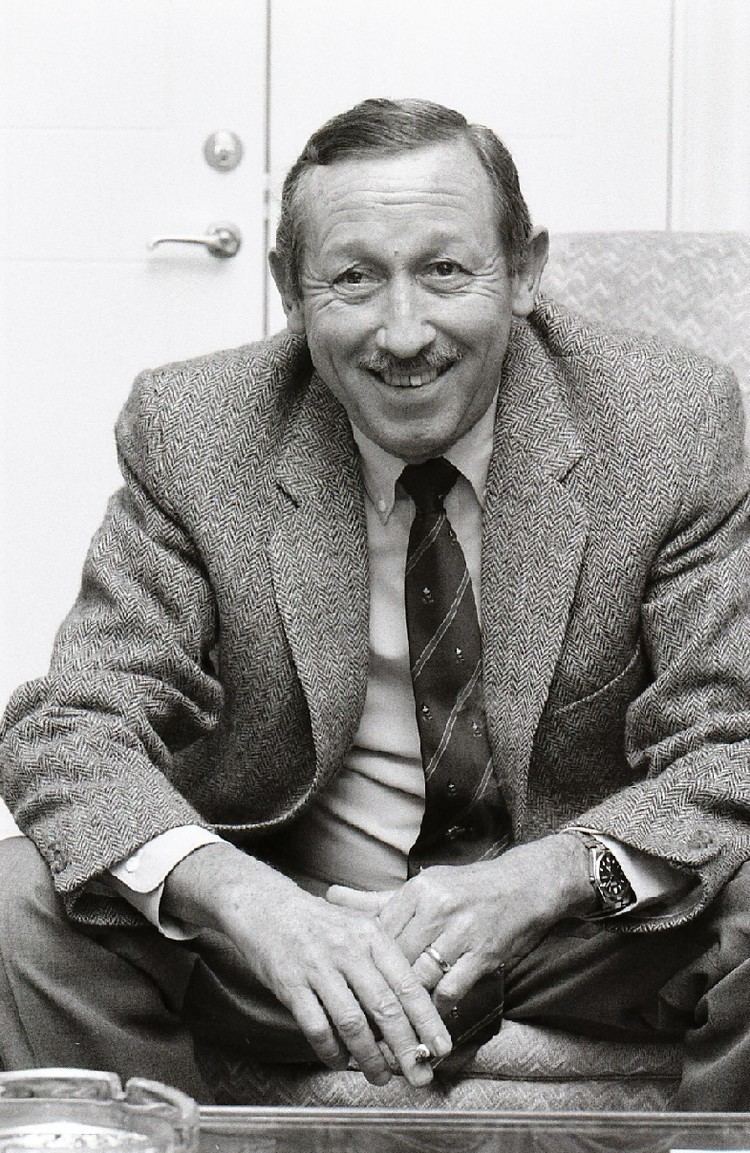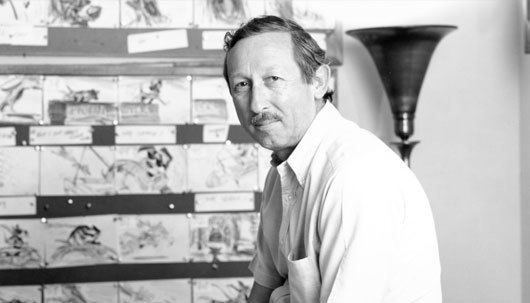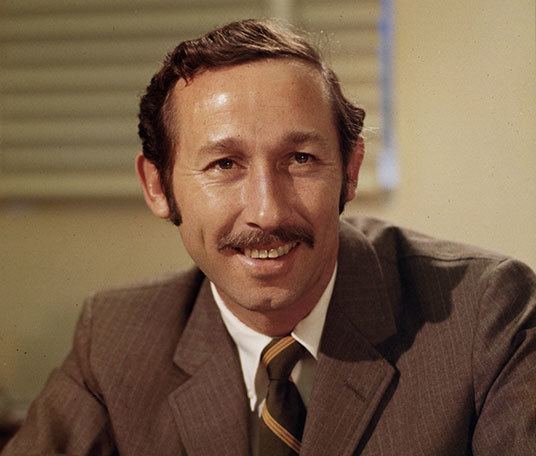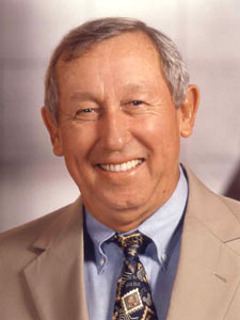Cause of death Stomach cancer Role Executive Name Roy Disney | Nationality American | |
 | ||
Full Name Roy Edward Disney Born January 10, 1930 ( 1930-01-10 ) Los Angeles, California, U.S. Residence Los Angeles, California Parents Edna Disney, Roy O. Disney Children Abigail Disney, Roy Patrick Disney, Tim Disney, Susan Disney Lord Cousins Diane Disney Miller, Sharon Mae Disney Similar People Abigail Disney, Michael Eisner, Don Hahn, Diane Disney Miller, Roger Allers | ||
Disney executive roy e disney talks with jimmy carter
Roy Edward Disney, KCSG (January 10, 1930 – December 16, 2009) was a longtime senior executive for The Walt Disney Company, which his father, Roy Oliver Disney, and his uncle Walt Disney founded. At the time of his death he was a shareholder (more than 16 million shares or about 1%), and served as a consultant for the company and Director Emeritus for the Board of Directors. He is perhaps best known for organizing the ousting of two top Disney executives: first, Ron Miller in 1984, and then Michael Eisner in 2005.
Contents
- Disney executive roy e disney talks with jimmy carter
- In Memory of Roy E Disney
- Early life and career
- First Save Disney campaign 1984
- Partnership with Eisner
- Second Save Disney campaign 200305
- Appearances
- Other work
- Business interests
- Personal life
- Honors
- Death
- References

As the last member of the Disney family to be actively involved in the company, Roy Disney was often compared to his uncle and father. In 2006, Forbes magazine estimated his personal fortune at about $1.2 billion.

In Memory of Roy E. Disney
Early life and career
Disney was born in Los Angeles, California, the son of Edna (née Francis; 1890-1984) and Roy Oliver Disney (1893-1971), and nephew of Walt Disney. He graduated from Pomona College in 1951 and first began working for Walt Disney Productions as an assistant director and producer (True-Life Adventure). He continued until 1967 when he was elected to the Board of Directors of the company.
First "Save Disney" campaign (1984)

Roy Disney resigned as an executive from Walt Disney Productions in 1977 due to disagreements with corporate decisions then. As he claimed later, "I just felt creatively the company was not going anywhere interesting. It was very stifling." He retained a seat on the board of directors.
His resignation from the board in 1984, which occurred in the midst of a corporate takeover battle, was the beginning of a series of developments that led to the replacement of company president and CEO Ronald William Miller (married to Walt's daughter Diane Marie Disney) by Michael Eisner and Frank Wells. While investors were attempting hostile takeovers of Disney with the intention of dismantling the company and selling off its assets, Roy organized a consortium of white knight investors to fend off the takeover attempts which led to Eisner and Wells being brought on. Roy soon returned to the company as vice-chairman of the board of directors and chairman of the animation department, later named Walt Disney Feature Animation.
Partnership with Eisner
During the late 1980s and 1990s, Roy's department produced a number of commercially successful, critically acclaimed films and the era has been called a renaissance for the company and animation in general. The Lion King, for instance, garnered nearly $1 billion since its release in the summer of 1994 and was the second highest-grossing film of the year. There was, however, a marked decline in profits starting at the end of the decade as Disney expanded into lower-grossing though profitable direct-to-video spin-offs and sequels.
Roy was concerned about Jeffrey Katzenberg taking too much credit for the success of Disney's early 1990s releases. When Frank Wells died in a helicopter crash in 1994, Michael Eisner refused to promote Katzenberg to the vacated position of president. Eisner recalled that "Roy [Walt Disney's nephew and a force on Disney's board who Eisner says "could be a troublemaker"], who did not like him at all — I forget the reason, but Jeffrey probably did not treat him the way that Roy would have wanted to be treated — said to me, 'If you make him the president, I will start a proxy fight.'" Tensions between Katzenberg, Eisner and Disney resulted in Katzenberg being forced to resign from the company that October. Katzenberg launched a lawsuit against Disney to recover money he felt he was owed and settled out of court for an estimated $250 million.
On October 16, 1998, in a surprise presentation made at the newly unveiled Disney Legends Plaza at the company's headquarters, Disney Chairman Michael Eisner presented him with the prestigious Disney Legends Award. Roy Disney's pet project was the film Fantasia 2000, a sequel to the 1940 animated movie Fantasia produced by his uncle Walt Disney. Walt Disney had planned a sequel to the original movie but it was never made. Roy decided to make this long-delayed sequel, and he was the executive producer of the film that took nine years to produce and was finally released on December 17, 1999. Like its predecessor, the film combined high-quality contemporary animation and classical music; however, also like the original, it was not a financial success at the US box office.
Second "Save Disney" campaign (2003–05)
After a struggle with CEO Michael Eisner, Roy Disney's influence began to wane as more executives friendly to Eisner were appointed to high posts. When the board of directors rejected Disney's request for an extension of his term as board member, he announced his resignation on November 30, 2003, citing "serious differences of opinion about the direction and style of management" in the company. He issued a letter criticizing Eisner for mismanaging the company, neglecting the studio's animation division, failures with ABC, timidity in the theme park business, instilling a corporate mentality in the executive structure, turning the Walt Disney Company into a "rapacious, soul-less" conglomerate, and for refusing to establish a clear succession plan.
After his resignation, Disney helped establish the website SaveDisney.com, intended to oust Michael Eisner and his supporters from their positions and revamp the Walt Disney Company. On March 3, 2004, at Disney's annual shareholders' meeting, a surprising and unprecedented 43% of Disney's shareholders, predominantly rallied by former board members Roy Disney and Stanley Gold, voted to oppose the re-election of Eisner to the corporate board of directors. This vigorous opposition, unusual in major public corporations, persuaded Disney's board to strip Eisner of his chairmanship and give that position to George J. Mitchell. The board did not give Eisner's detractors what they really wanted: his immediate removal as chief executive. Roy Disney's campaign regarded Mitchell himself unfavorably; 25% of shareholders opposed Mitchell's re-election to the board in the same election.
As criticism of Eisner intensified in the wake of the shareholder meeting, however, his position became increasingly tenuous, and on March 13, 2005, Eisner announced that he would step down as CEO on September 30, one year before his contract expired. On July 8, Roy and the Walt Disney Company, then still nominally headed by Eisner but, in fact, run by Eisner's long-time lieutenant, Bob Iger, agreed to "put aside their differences." Roy rejoined the Walt Disney Company as a non-voting Director Emeritus and consultant. Roy and Gold agreed to shut down their SaveDisney.com website, which went offline August 7.
On September 30, Eisner resigned both as an executive and as a member of the board of directors, and, severing all formal ties with the company, he waived his contractual rights to perks such as use of a corporate jet, a Golden Pass and an office at the company's Burbank headquarters. Eisner's replacement was Bob Iger. One of Roy Disney's stated reasons for engineering his second "Save Disney" initiative had been Eisner's well-publicized but financially unjustified dissatisfaction with long-time production partner Pixar Animation Studios and its CEO Steve Jobs, creators of shared hits Toy Story, Monsters, Inc., Finding Nemo, and other critically acclaimed computer animated motion pictures. This estrangement was quickly repaired by successor Iger upon Eisner's exit, and on January 24, 2006, the company announced it would acquire Pixar in an all-stock deal worth $7.4 billion, catapulting Jobs, also co-founder and CEO of Apple, Inc, to Disney's largest shareholder with 7% of the corporation's outstanding shares. Jobs also gained a new seat on Disney's board of directors. Former CEO Eisner, who still holds 1.7% of shares, became Disney's second-largest shareholder, and Director Emeritus Roy Disney, with 1% of shares, became its third-largest owner. Roy Disney's efforts to oust Eisner from the company were chronicled by James B. Stewart in his best-selling book, DisneyWar.
Appearances
Roy Disney appeared in several documentaries concerning animation and filmmaking. He appeared in the 1985 documentary film The Fantasy Film Worlds of George Pal (produced and directed by Arnold Leibovit), the 2002 documentary The Sweatbox, and the 2007 documentary The Pixar Story.
Other work
Business interests
Shamrock Holdings, which Roy Disney chaired and Stanley Gold runs as CEO, is an investment company which managed Roy Disney's personal investments.
Personal life
Disney held several sailing speed records including the Los Angeles to Honolulu monohull time record. He set it on his boat Pyewacket in July 1999 (7 days, 11 hours, 41 minutes, 27 seconds).
On January 19, 2007, after beginning a relationship with Leslie DeMeuse, Roy Disney (then 77 years old) filed for divorce from his wife, Patricia (then 72), citing "irreconcilable differences", according to court documents. The couple, married 52 years, had been living apart for an unspecified amount of time, according to the Los Angeles County Superior Court filing. They had four adult children: Tim Disney, Roy Patrick Disney, Abigail Disney, and Susan Disney Lord. Patricia Disney died of Alzheimer's disease on February 3, 2012, aged 77.
In 2008, Roy Disney married Leslie DeMeuse, a CSTV producer, and Emmy winner of various sailing documentaries. The two created the sailing documentary TransPac—A Century Across the Pacific in 2000, and were executive producers of the sailing documentary Morning Light, which follows the selection and training of 18- to 23-year-old sailors on the 2007 Transpacific Yacht Race.
Honors
On January 4, 1998, Pope John Paul II made Disney a Knight Commander of the Pontifical Order of St. Gregory the Great (KCSG).
On January 1, 2000, Disney participated as the Grand Marshal of the 111th Rose Parade alongside Mickey Mouse and Donald Duck.
On April 26, 2008, Disney received an honorary doctorate from the California Maritime Academy, for his many contributions to the state and the nation, including international sailing.
As a tribute to Disney, the animation studio building at the Walt Disney Studios, in Burbank, California, was re-dedicated as the "Roy E. Disney Animation Building" on May 7, 2010. Hundreds of D23 members were present for the celebration. VIPs Roy Patrick Disney, CEO executive Robert A. Iger, film producer Don Hahn, and Mickey Mouse were on hand for the dedication.
Death
Disney died of stomach cancer on December 16, 2009 at Hoag Memorial Hospital in Newport Beach, California. He was 79 years old, three weeks shy of his 80th birthday, and had been battling the disease for over a year. After his funeral service he was cremated, and his ashes were scattered into the Pacific Ocean.
